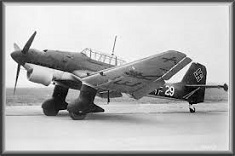German occupied airfields in Norway during WWII held strategic importance. They also proved very costly for the Nazi war effort. Read our guide for more facts & information…
The Strategic Importance of German Airfields in Norway
At the beginning of WWII, an uneasy calm settled over Europe following the German conquest of Poland. Although the naval war raged on in the North Atlantic, there were no major land battles. During this two month period in February and March of 1940, German military leaders set their sights on Denmark and Norway and began their plans for invasion.
Strategic Value of Norway
Although Norway had been trying desperately to update and expand its Royal Air Force, most of the planes it had ordered had not yet been delivered when the Germans invaded Norway on April 9, 1940. They had three military airfields which were important to both the Germans and the Allies since they gave easy air access to Great Britain and Northern Europe. The other strategic reason was the iron ore Germany bought from neutral Sweden could not be delivered to blockaded German ports. The conquest of Norway gave the Germans a huge advantage in both air and naval warfare in Europe.
The Capture of Norway Airfields
Shortly after the Germans secured their conquest of Denmark, they turned their attention to ostensibly neutral Norway. Great Britain had already sent troops into the area with the full cooperation of the government. The Germans dropped paratroopers to take control of the Norway airfields and began a naval battle in the fjords of the coast. While German naval losses were heavy, the green Norwegian troops were no match for the battle hardened German paratroopers and even with British assistance, Norway fell to the Germans in only a month.
German Control of Norway Airfields
The Germans operated military missions from Norway airfields, particularly Aalborg Airfield near Oslo which fell on the first day of the invasion. From Aalborg and two other Norway airfields the Germans launched missions to protect their naval ships and transports in the Baltic Sea. This enabled the Germans to protect the vital shipments of iron ore from Sweden. Both the Norwegian resistance and the British military continued to harass the German occupation army with commando raids forcing them to commit 300,000 troops to Norway to hold the airfields and retain control of the government. This troop commitment proved costly to the Germans as the European war dragged on.
The German capture of Norway airfields was not the strategic victory the Germans originally envisioned. The troop commitment of occupation forces stretched the German army thin as it fought the European war on two fronts. Norway’s proximity to Britain made it possible for the British army to launch periodic commando raids at strategic areas and the Norwegian resistance continued to keep German occupation troops busy making any troop withdrawal impractical.





